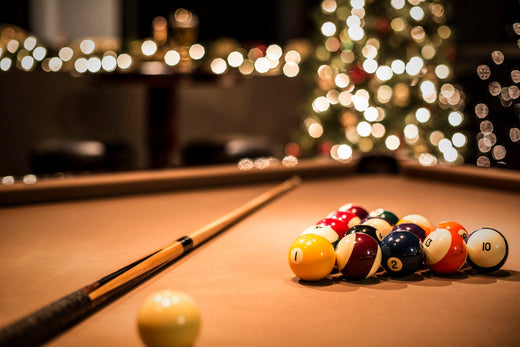The first slate table was made in 1826. A man named John Thurston became frustrated with the tendency of wooden pool tables to warp, rendering them difficult to play on. He sought out a different type of material that could be used to make pool tables, one that offered a smooth playing surface, yet was inexpensive and easy to find, and one that would not warp due to moisture or absorption. Slate was the material that met all of these criteria, and is still used in superior tables today.
Slate is a solid rock made of many minerals including quartz, clay and mica with a fine grain. It is ideal for pool tables because it naturally splits into wide, level pieces, and can be easily ground and polished into a perfectly flat surface. While heavier and more expensive than wood, slate ensures that the play surface remans smooth and level. Wood, as well as table tops made from synthetics, can warp quite easily. Because it is so durable and known to last, many manufacturers will provide a lifetime warranty for a slate pool table.
Slate is available in areas all over the globe, however Brazil, China, India, and Italy have become known as major slate exporters. In particular, slate from the Liguarian region of Italy is traditionally considered the highest quality material for use in pool tables, and will typically be marked ‘OIS’, meaning Original Italian Slate. Italian slate is usually softer and therefore easier to work with. While much harder, Brazilian slate is also gaining a fan base, as it is more durable, will endure years of heavy use and is virtually impossible to bend or break. Also, due to its mineral makeup, it has an extremely flat surface. With proper maintenance, a pool table with an Italian or Brazilian slate playing surface can last for generations.
A slate for a typical pool table weighs between 400 to 600 pounds, or roughly 180 to 270 kilograms, and is three-quarters of an inch to one inch, or roughly two to two-and-a-half centimeters thick. Therefore, it is not an easy or inexpensive proposition to ship one. To make transportation easier, and to reduce the risk of fracture during transit, a slate is normally separated into three pieces. Of course, when the slate is reassembled, care must be taken to ensure that all three segments match up perfectly and the table is completely flat. While one-slate tables are available for purchase, most buyers prefer a three-segment table because it’s much easier to move it, and a professional installer can make the slate nearly as perfect as a one-segment slate table.
In a quality table, the slate is larger than the actual playing surface, extending beneath the rails of the table and therefore providing them with added resilience. The slate should also be inside a wooden frame so that the felt cloth, once stretched over the slate, can be stapled or tacked to the frame, rather than adhered to the underside of the slate directly.




